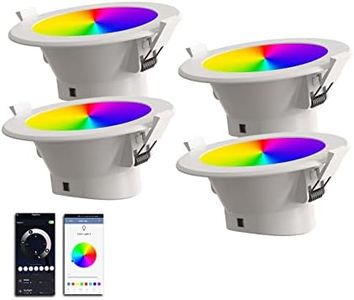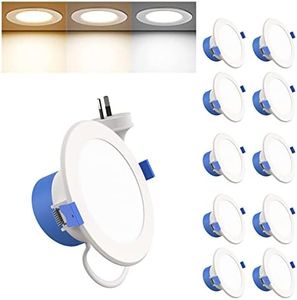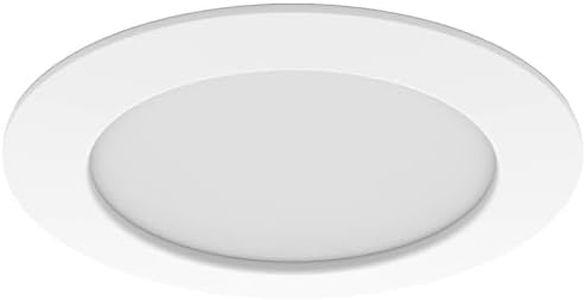We Use CookiesWe use cookies to enhance the security, performance,
functionality and for analytical and promotional activities. By continuing to browse this site you
are agreeing to our privacy policy
10 Best Led Recessed Ceiling Lights
From leading brands and best sellers available on the web.Buying Guide for the Best Led Recessed Ceiling Lights
Choosing the right LED recessed ceiling lights can have a big impact on the ambiance, functionality, and efficiency of your space. These lights are mounted flush within the ceiling, resulting in a clean and modern look. When selecting the right ones for you, consider the room’s size, purpose, ceiling height, and the atmosphere you want to create. Good lighting isn't just about brightness—it influences how comfortable and practical your space becomes. Understanding a few key features will guide you toward making the best choice for your needs.Brightness (Lumens)Brightness, measured in lumens, refers to how much light the fixture emits. This is crucial because it determines how well your room is lit. The higher the lumens, the brighter the light. Smaller rooms—like bathrooms or closets—often need less brightness (around 400-800 lumens per light), while larger rooms or areas with higher ceilings may need more (upwards of 1000 lumens). To choose the right amount of brightness, think about what you'll be doing in the space: for focused tasks, aim for more lumens, while for relaxed ambiance, fewer lumens might be best.
Color Temperature (Kelvin)Color temperature, measured in Kelvin (K), determines how ‘warm’ or ‘cool’ the light appears. Lower Kelvin numbers (2700K–3000K) produce a warm, yellowish glow ideal for relaxing areas like living rooms and bedrooms. Middle ranges (3500K–4000K) create a neutral white light suitable for kitchens or workspaces. Higher values (5000K–6500K) offer a cool, bluish light that works well for garages or areas requiring alertness. Match the color temperature to the mood and tasks of your space to achieve the best results.
Beam AngleThe beam angle tells you how wide the light is spread from the fixture. Narrow angles (under 40°) give a focused light, perfect for highlighting artwork or specific objects. Medium angles (around 40°–60°) offer a good balance for general lighting, while wider angles (over 60°) spread light over bigger areas, ideal for larger rooms or creating even illumination. Consider how much area you want each light to cover when selecting the beam angle.
DimmabilityDimmable LED recessed lights allow you to adjust brightness to suit different occasions and moods. Not all fixtures offer this feature, so check if it’s important for your needs. Dimmability works best in multi-use rooms—like living or dining areas—where you may prefer brighter light at certain times and a softer ambiance at others. Be sure the lights are compatible with your dimmer switches for smooth control.
Installation Type and DepthInstallation depth, often called can or housing depth, is how much space is needed above your ceiling to fit the fixture. Shallow or ‘slim’ fixtures work for ceilings with limited space or obstructions, while deeper fixtures may be better for traditional ceilings. Consider whether you need new construction or remodel housings, depending on whether you’re building or upgrading an existing space. Make sure your ceiling can accommodate the light you select.
Trim StyleTrim style is the visible part of the recessed light and affects both the light’s look and its functionality. Baffle trims minimize glare, reflector trims enhance brightness, and adjustable or gimbal trims allow you to direct the light where needed. Square and round trims can match your ceiling style. Pick a trim style that matches your décor and lighting goals.
Color Rendering Index (CRI)CRI measures how accurately the light shows colors compared to natural sunlight, with higher numbers (on a scale up to 100) meaning better color reproduction. For most home environments, a CRI above 80 is usually enough, but if you need true-to-life color—such as in kitchens, bathrooms, or art studios—go for lights with a CRI of 90 or higher. Assess the activities in your space to decide how important accurate color rendering is for you.
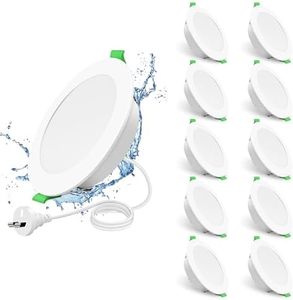

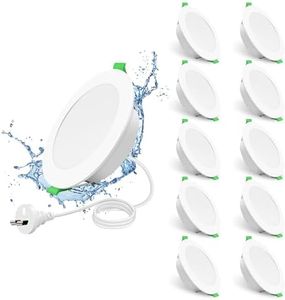
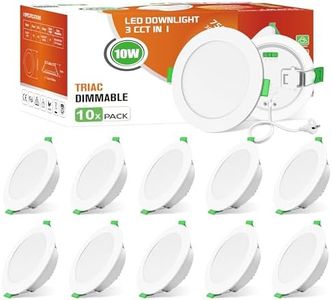
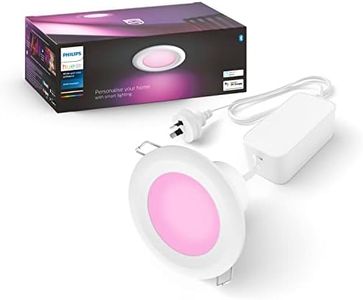
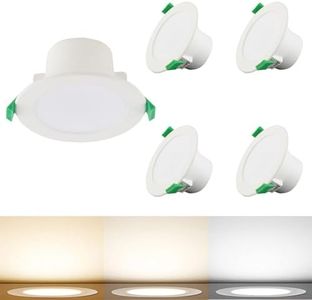

![Philips Hue Milliskin White Ambiance Recessed Led Smart Ceiling Spotlight [Gu10 Spot] with Bluetooth, White Compatible with Alexa, Google Assistant and Apple Homekit](https://images-proxy.bestreviews.guide/-BBC9guwx0hfJvB8uHUNA41s_i0=/0x300/https://m.media-amazon.com/images/I/31y9IMnOEaL._AC_CX679_.jpg)



